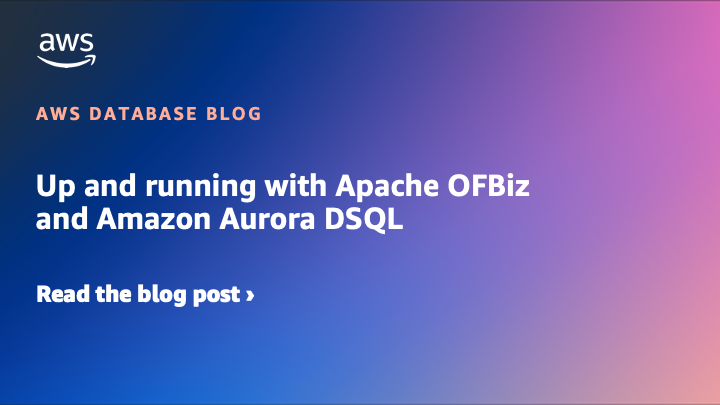AWS Database Blog
Using generative AI and Amazon Bedrock to generate SPARQL queries to discover protein functional information with UniProtKB and Amazon Neptune
In this post, we demonstrate how to use generative AI and Amazon Bedrock to transform natural language questions into graph queries to run against a knowledge graph. We explore the generation of queries written in the SPARQL query language, a well-known language for querying a graph whose data is represented as Resource Description Framework (RDF).
Working with OEM Agent software for Amazon RDS for Oracle
Amazon RDS for Oracle supports specific versions of the OEM Agent. Amazon recently released OEM Management Agent version 13.5.0.0.v2 for Amazon RDS for Oracle databases. OEM Agent version 13.5.0.0.v2 requires Oracle Management Server (OMS) version 13.5.0.23 at the minimum. In this post we explore critical scenarios affecting OEM Agents on Amazon RDS for Oracle Database instances and outline essential considerations for users.
Build low-latency, resilient applications with Amazon MemoryDB Multi-Region
On December 1, 2024, we announced the general availability of Amazon MemoryDB Multi-Region, a fully managed, active-active, multi-Region database that you can use to build applications with up to 99.999% availability, microsecond read, and single-digit millisecond write latencies across multiple Regions. In this post, we cover the benefits of MemoryDB Multi-Region, how it works, its disaster recovery capabilities, the consistency and conflict resolution mechanisms, and how to monitor replication lag across Regions.
Improve PostgreSQL performance using the pgstattuple extension
In this post, we explore the pgstattuple extension in depth; what insights it offers, how to use it to diagnose issues in Amazon Aurora PostgreSQL-Compatible Edition and Amazon Relational Database Service (Amazon RDS) for PostgreSQL, and best practices for harnessing its capabilities.
Using StatsD for monitoring Oracle databases running on Amazon RDS or Amazon EC2
Monitoring databases is essential in large IT environments to prevent potential issues from becoming major problems that can result in data loss or downtime. Having custom dashboards and alarm-based monitoring for the database can help in analyzing historical metrics patterns and improve database availability by alerting users of any abnormal threshold breaches. In this post, we show you how to set up monitoring for your Oracle database using StatsD.
Optimizing cost savings: The advantage of Amazon Aurora over self-managed open source databases
In this post, we highlight often overlooked architectural designs and the inherent features of Aurora that optimize costs when deploying an open source database. The following sections examine various use cases, contrasting typical self-managed database configurations and their associated costs with the equivalent solution on Aurora, highlighting potential cost savings and operational efficiencies.
Up and running with Apache OFBiz and Amazon Aurora DSQL
In this post, we show you a worked example of taking an existing application that works on PostgreSQL databases and adapting it to work with an Aurora DSQL database. In addition to adapting for the previously mentioned aspects, we also address some data type incompatibilities and work around some limits that currently exist in Aurora DSQL.
Transition a pivot query that includes dynamic columns from SQL Server to PostgreSQL
When assisting customers with migrating their workloads from SQL Server to PostgreSQL, we often encounter a scenario where the PIVOT function is used extensively for generating dynamic reports. In this post, we show you how to use the crosstab function, provided by PostgreSQL’s tablefunc extension, to implement functionality similar to SQL Server’s PIVOT function, offering greater flexibility.
Integrate natural language processing and generative AI with relational databases
In this post, we present an approach to using natural language processing (NLP) to query an Amazon Aurora PostgreSQL-Compatible Edition database. The solution presented in this post assumes that an organization has an Aurora PostgreSQL database. We create a web application framework using Flask for the user to interact with the database. JavaScript and Python code act as the interface between the web framework, Amazon Bedrock, and the database.
Scheduled scaling of Amazon Aurora Serverless with Amazon EventBridge Scheduler
In this post, we demonstrate how you can implement scheduled scaling for Aurora Serverless using Amazon EventBridge Scheduler. By proactively adjusting minimum Aurora Capacity Units (ACUs), you can achieve faster scaling rates during peak periods while maintaining cost efficiency during low-demand times.









